Fieldtest: Rhodesian Brushstroke
Introduction
Rhodesian Brushstroke is a camouflage pattern that has seen an uprise in popularity in the last 5+ years. One of many reasons might be a mix of History buffs and collectors influencing guntubers, who then picked up the pattern for their entertainment videos. At the same time, the nostalgia of the African Bush Wars and the anti-communist narratives in this context appealed to more conservative circles with Rhodesian Brushstroke becoming the identifying feature for this.
That being said, the camouflage pattern is not only good looking, but also features a rich history. Being interested in the history of the African Bush Wars myself, I was also interested in adding it to my “archive”. Matej from Perunika was nice enough to support this article with a set. So let’s take a closer look at pattern.
Rhodesian Brushstroke
When it comes to camouflage patterns that have stood the test of time, Rhodesian Brushstroke holds a unique space. Developed in the mid-1960s for the Rhodesian Security Forces during the protracted Bush War, this pattern was engineered specifically for the Southern African landscape. Characterized by irregular, vertical strokes of olive green, brown, and light sand, it was optimized for the region’s miombo woodlands, scrub, and semi-arid savannah. Certainly one influence on Rhodesian Brushstroke came from the British WWII Denison Smocks, which were also in use with colonial security forces. The Denison featured large, irregular brushstroke patterns in earthy greens and browns, painted or printed by hand or stencil in early versions.
With Rhodesia’s declaration of independence and the start of the Rhodesian Bush War, the need for a distinct camouflage pattern arose. A local artist with the name of Di Cameron, was tasked with designing the pattern. As the story goes, she hand-painted the original Brushstroke layout over the course of a few days, reportedly over a single weekend. It was then produced by companies like David Whitehead Textiles. Its limited manufacturing runs add to its mystique today, with original uniforms being highly sought after collectibles.
After the war ended and Rhodesia transitioned into Zimbabwe in 1980, the story of Rhodesian Brushstroke continued. Initially, Zimbabwean forces phased it out in favor of Portuguese vertical lizard camouflage. However, starting in the 1980s, the Zimbabwean government decided to reintroduce Rhodesian Brushstroke, but with a little change: namely that the brown element is printed over the green instead of the other way around.
Perhaps most telling of its enduring relevance was its performance in the U.S. Marine Corps camouflage trials in the early 2000s. As the USMC sought a successor to M81 Woodland, a wide variety of patterns was evaluated including Rhodesian Brushstroke. Despite being over four decades old at the time, Rhodesian Brushstroke performed strong in woodland and transitional environments. However, it was ultimately passed over in favor of the currently issued MARPAT pattern, as the USMC wanted something new and distinct.
That being said, Rhodesian Brushstroke has become widely available in the last few years, as a result of several companies picking up on trends involving camouflage. With it being easily available, I partnered up with Perunika again and was able to give the camouflage pattern my usual field test. So let’s get into the methodic remarks and the actual test.
Methodic Remarks
As always I want to point out several important aspects beforehand. First of all, I do not claim any scientific standard with my camouflage comparisons. I also conduct them with my best knowledge and the available resources. That being said, this is as comparative as it gets on the internet and on one platform in particular.
The pictures are usually taken at the same locations I always use for my camouflage comparisons. That way you can compare the various field tests I have done so far with each other. For this particular test two new locations were added, to show the pattern in its intended environment.
Before I start, please consider the following – as always:
If not stated otherwise I did not edit the pictures in any special way, except the following:
- Lens correction
- Watermark
- Blurred my face out if necessary
- .jpeg compression to make it web compliant
- I always do a proper white balance to make colors appear the way they are.
A short explanation to the environment and the procedure:
The pattern was tested in a Central European environment. Information about the various locations will be stated in the subsections. The pictures usually portray three different positions:
- Standing in the open (to get an idea of the pattern in this particular surrounding and if the colors match it)
- kneeling
- A leaning position (to mimic basic concealment/cover, without using vegetational enhancements)
As always I photographed the pattern with a wide angle lens at first and then with 35mm focal length, which mimics the actual picture the human eye would perceive at this distance. Having in mind the three different positions mentioned before, I usually end up with 6 pictures of each location.
Furthermore:
Given the amount of pictures in my field tests, I will not describe or comment on each picture. Instead I will give a more thorough analysis at the end of each subsection.
With that being said, let’s take a closer look at the pictures themselves.
Fieldtest – Rhodesian Brushstroke
Location 1
- European mixed forest with a high foliage canopy and some basic bushes, ferns and little trees on the ground.
- The floor is covered with tree trunks and cut branches, which change in color depending on the season.
- The pictures were taken in Summer and feature strong sunbeams and an overall “busier” lit environment.
- The camera is standing roughly 20 away from the human silhouette.
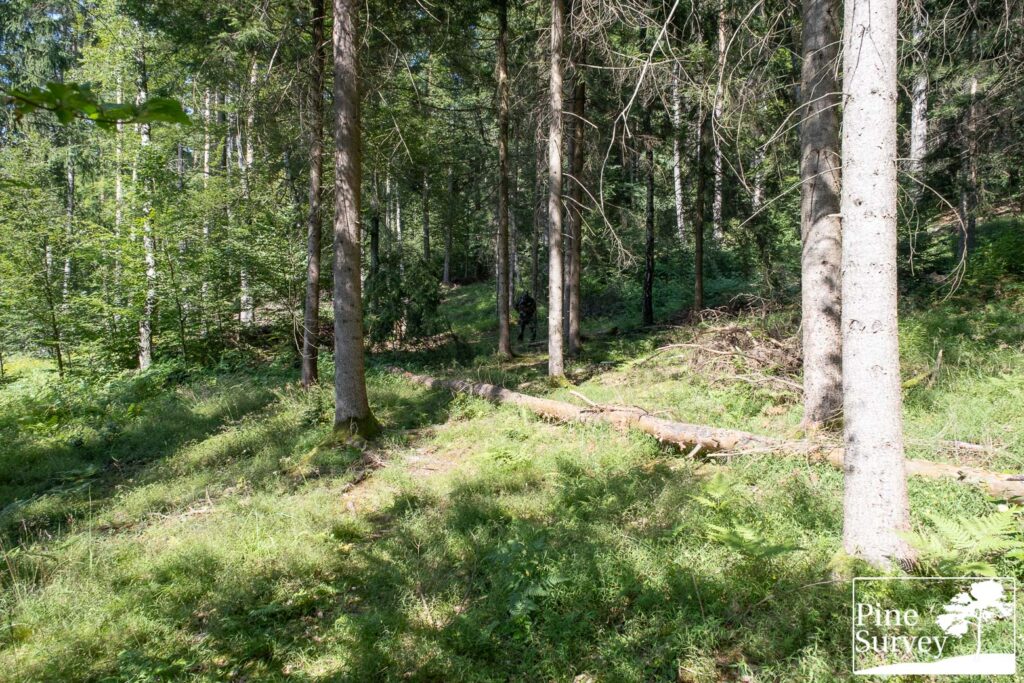
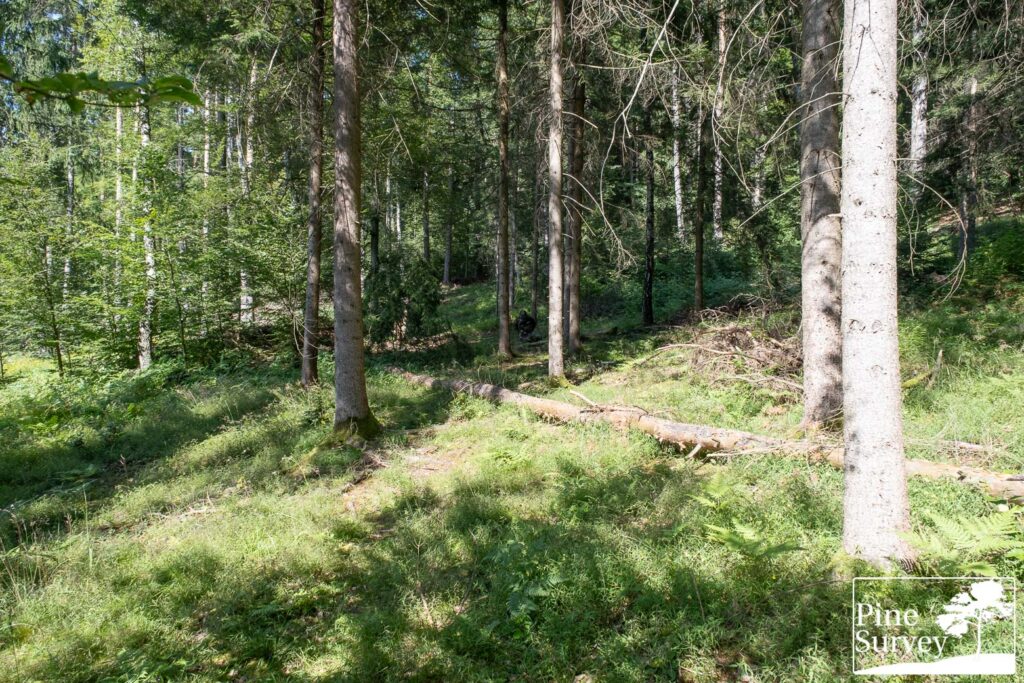
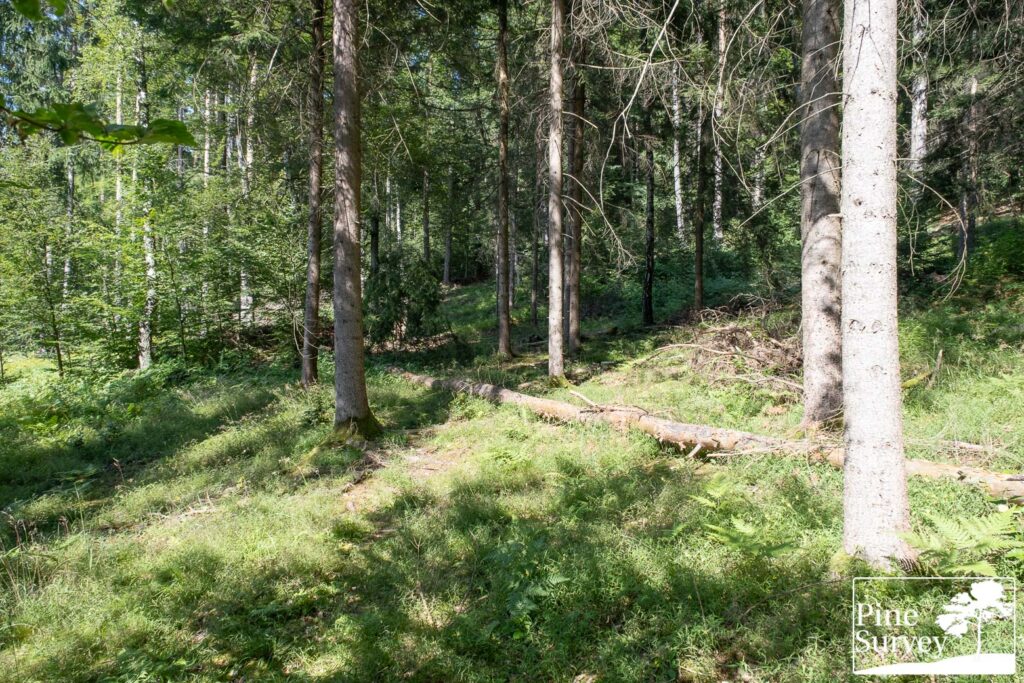
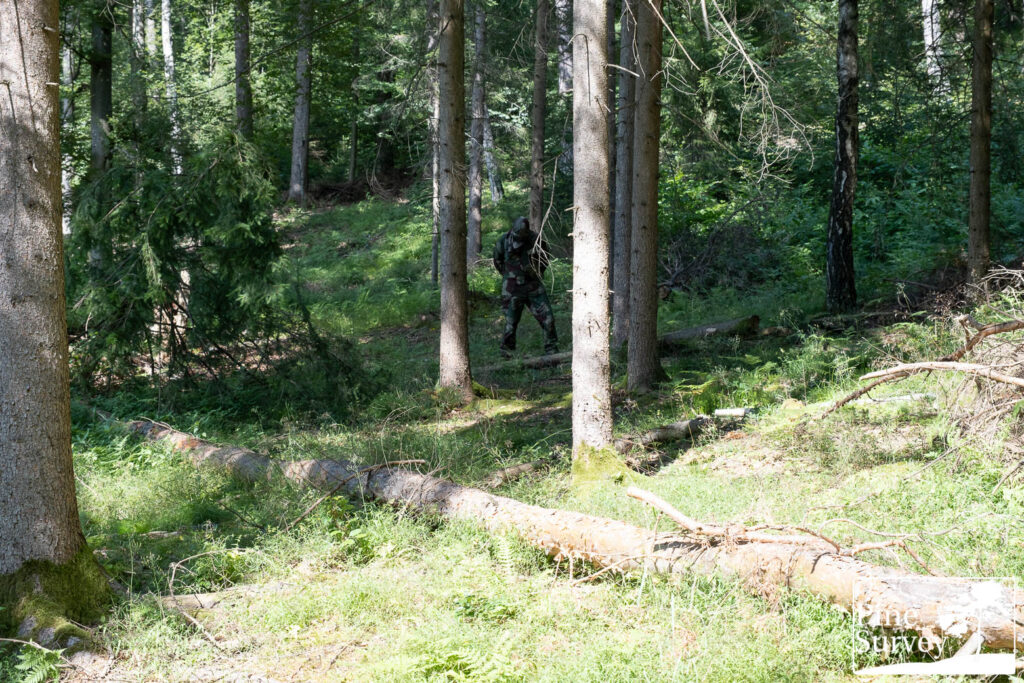
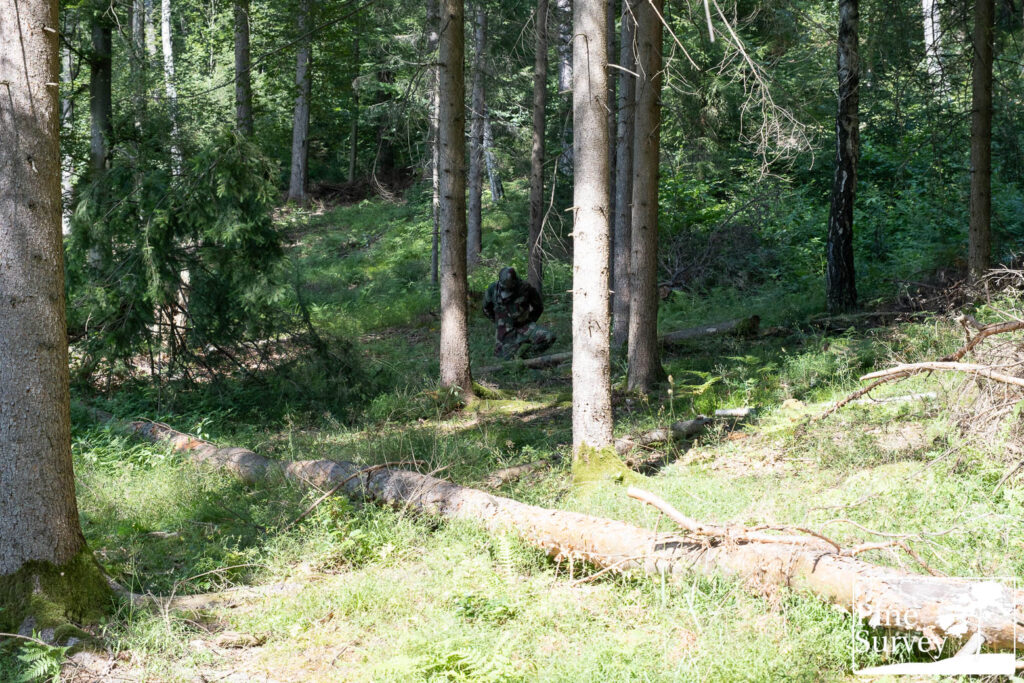
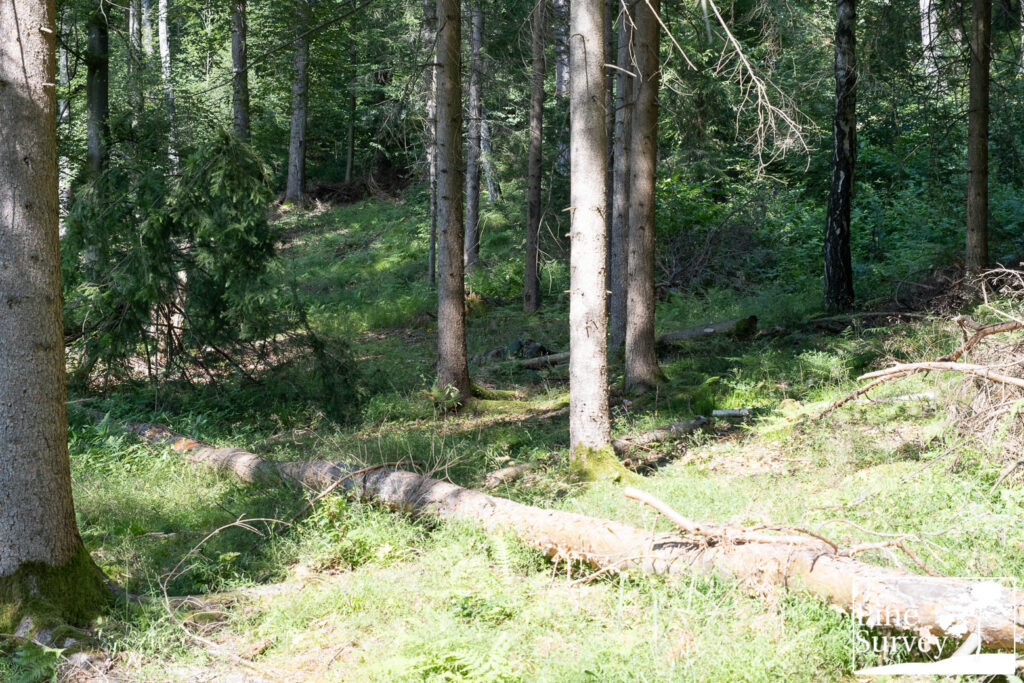
Observations – Location 1
Due to the prevailing light conditions, the camouflage pattern appears darker than usual, standing out against the bright background. The macro elements are immediately visible and do a solid job in breaking up the human outline. In the standing position, the brown tones dominate the overall appearance under these conditions, presenting a blob-like character that remains distinguishable.
Once kneeling, the effectiveness of the pattern improves noticeably. As the light becomes more favorable, it allows the macro elements to disrupt the silhouette more efficiently. It also enhances the green areas, enabling them to blend more naturally with the surroundings, resulting in a convincing camouflage effect. The prone position, however, proves to be the strongest (as always), concealing most of the body and providing the highest degree of effectiveness.
Photographs taken with a 35mm focal length highlight these aspects even better. Worth noting: The standing position shows the brown elements with their tendency to shift into a reddish hue, depending on the light. While disruption is visible, the silhouette remains clearly recognizable. In contrast, kneeling and prone positions demonstrate the true strength of the pattern, delivering an excellent overall camouflage effect.
Location 2
- Mixture of deciduous and coniferous forest, with a huge pile of cut branches on one side.
- Pictures were taken in summer and present strong sunbeams and therefore more challenging light settings.
- The site shows thicker vegetation in the background and very persistent ferns in the front.
- Distance is roughly 15m.
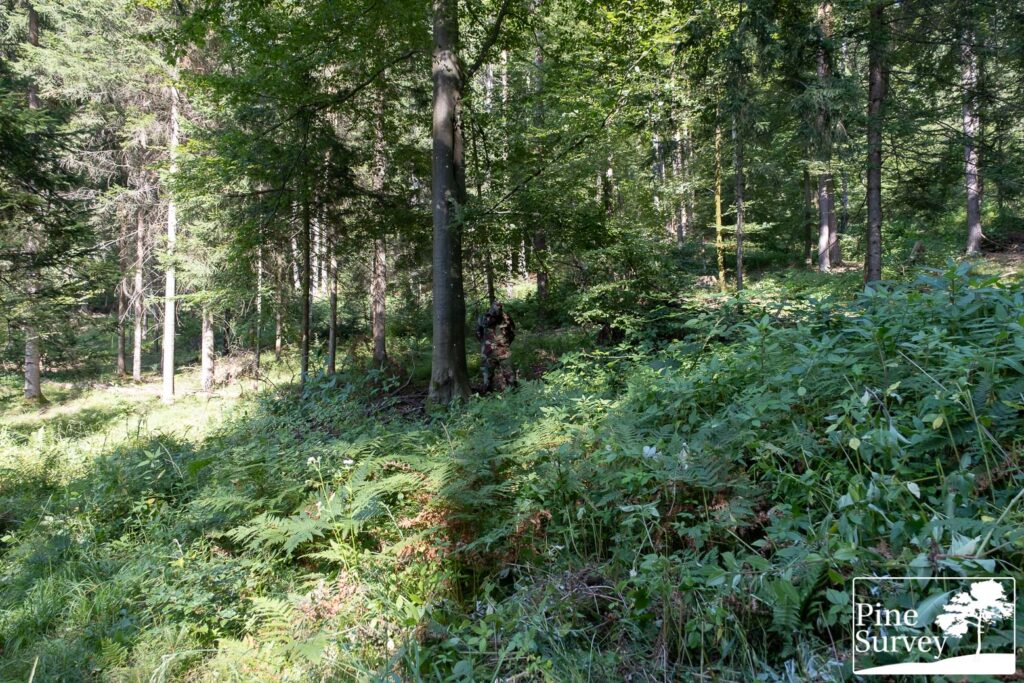
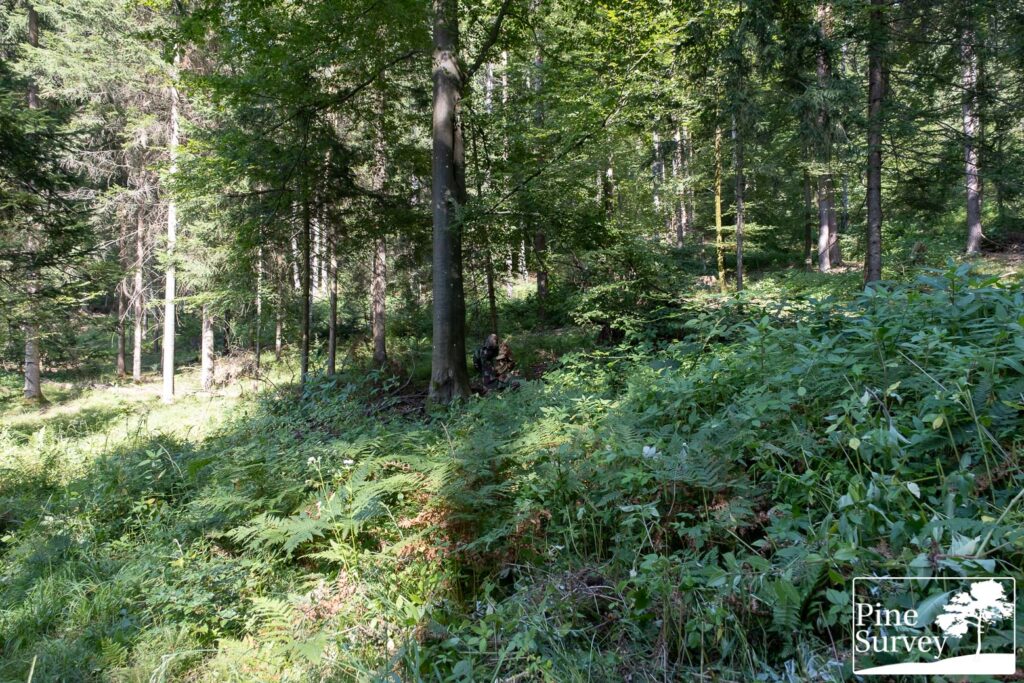
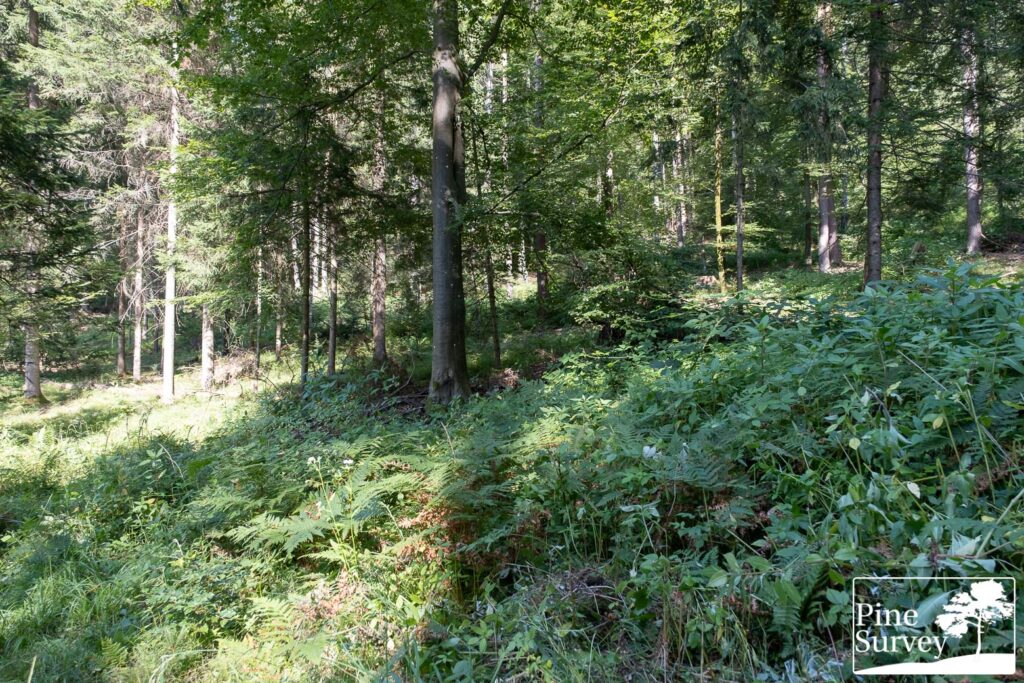
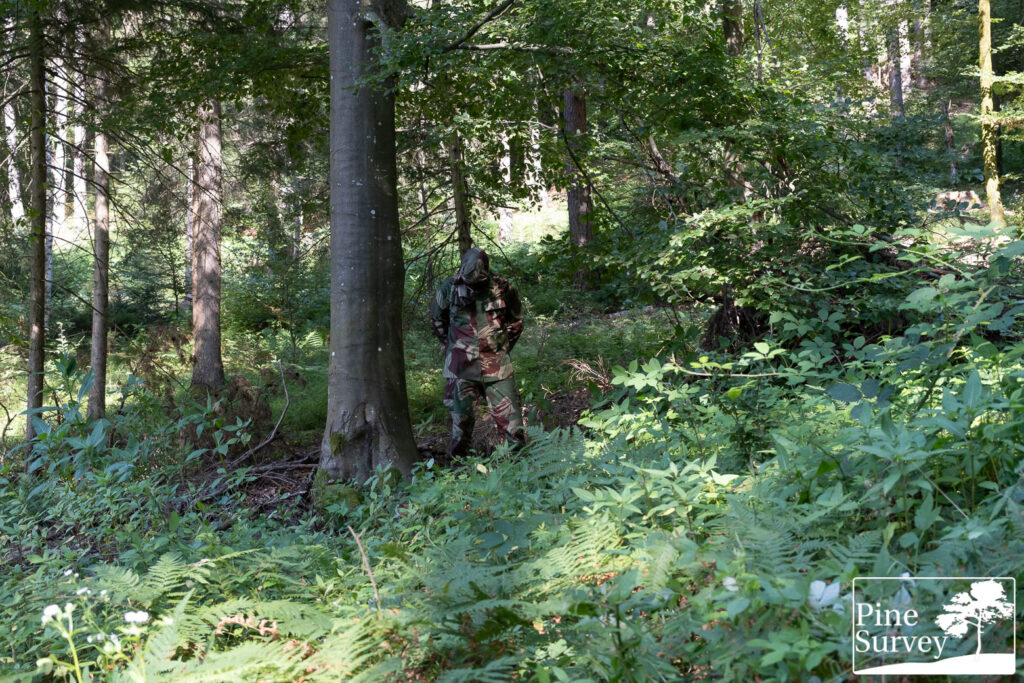
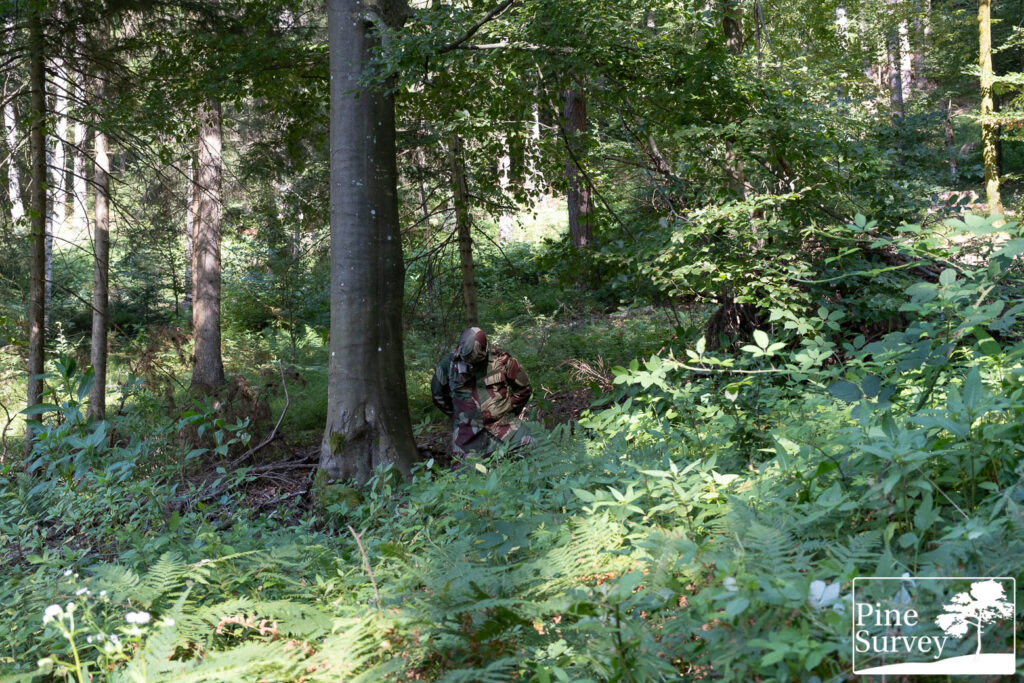
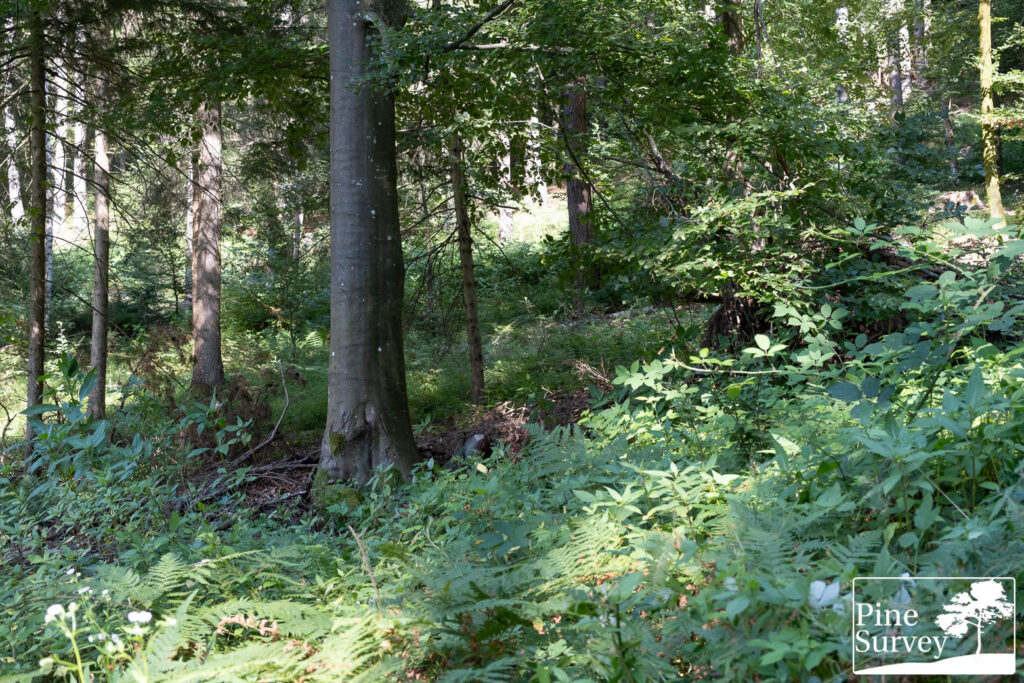
Observations – Location 2
At this location, the light is more direct, providing a balanced impression of the Rhodesian camouflage pattern. The darker background prevents the silhouette from standing out as it did in the first setting. Especially the brown elements find more corresponding tones in the surroundings, though they do show their slightly reddish appearance. That being said, the macro elements perform well in creating disruptive effects, with the tan areas in particular contributing significantly to breaking up the outline.
In the kneeling position, the body moves closer to the brown ground, which further enhances concealment, because of the matching coloration of the Rhodesian pattern. The organic shapes of Rhodesian Brushstroke add to the natural appearance, with the blending and disruption effects working seamlessly together to obscure the human form. The light conditions complement the pattern, as the strong contrast between light and shadow in this situation aligns perfectly with its intended design.
Images taken with a 35mm focal length underline these observations. The prone position, however, is less representative in both instances, as much of the body is obscured by ferns.
Addendum
Since the usual spots of my field tests are not showing the full picture of the effectiveness of Rhodesian Brushstroke, I will add a few additional pictures to give a better impression of the pattern.
First off, two pictures of a more brown dominant setting in a mixed forest, with plenty of dry leaves on the forest floor. I stuck with the kneeling and prone position as the standing position would stand out against the bright background.
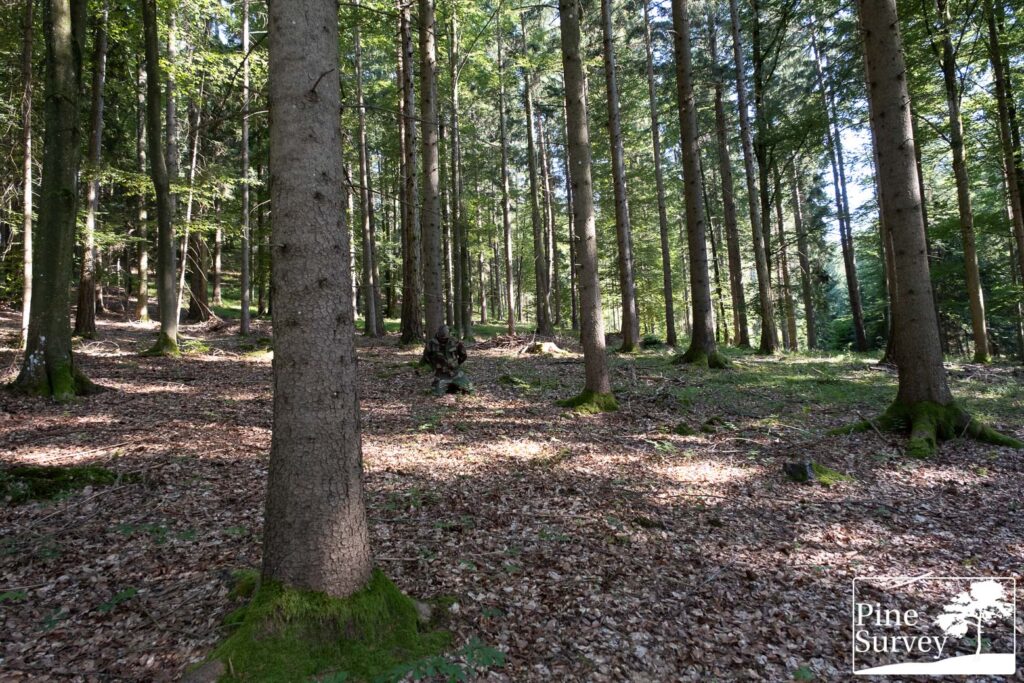
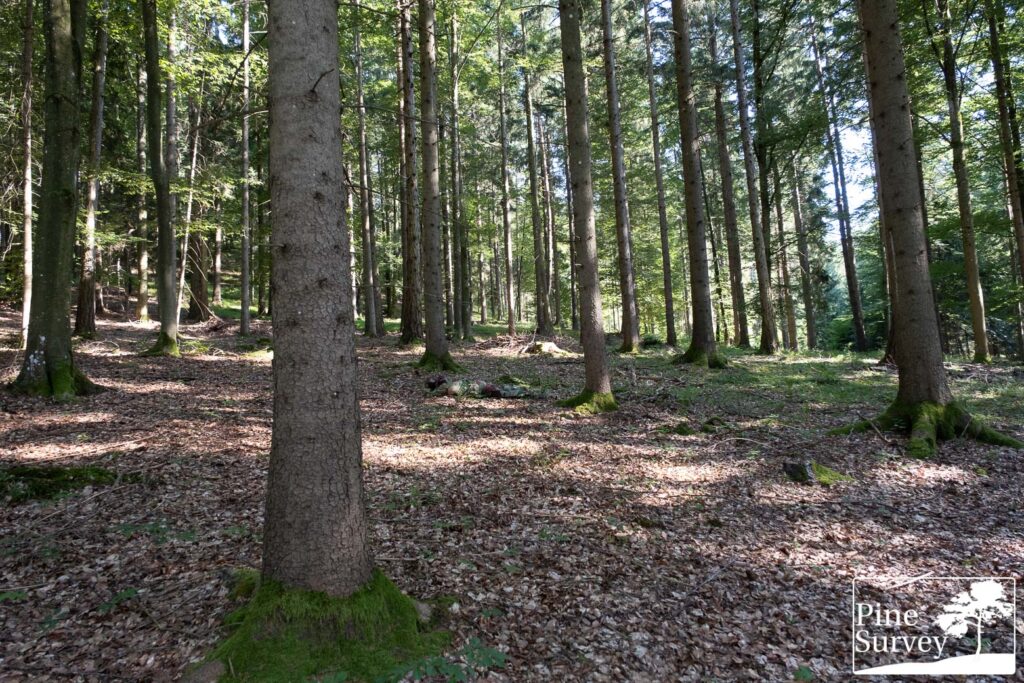
In this setting and with a bit more distance in mind, one can see that Rhodesian Brushstroke is meant for drier areas as well as for longer engagement distances, as the pattern consists of macro elements.
This becomes more apparent when looking at the following picture, showing the pattern at a distance of over 20m with 35mm focal length. In this case one can clearly see the disruptive properties and how well the colours blend into the environment.
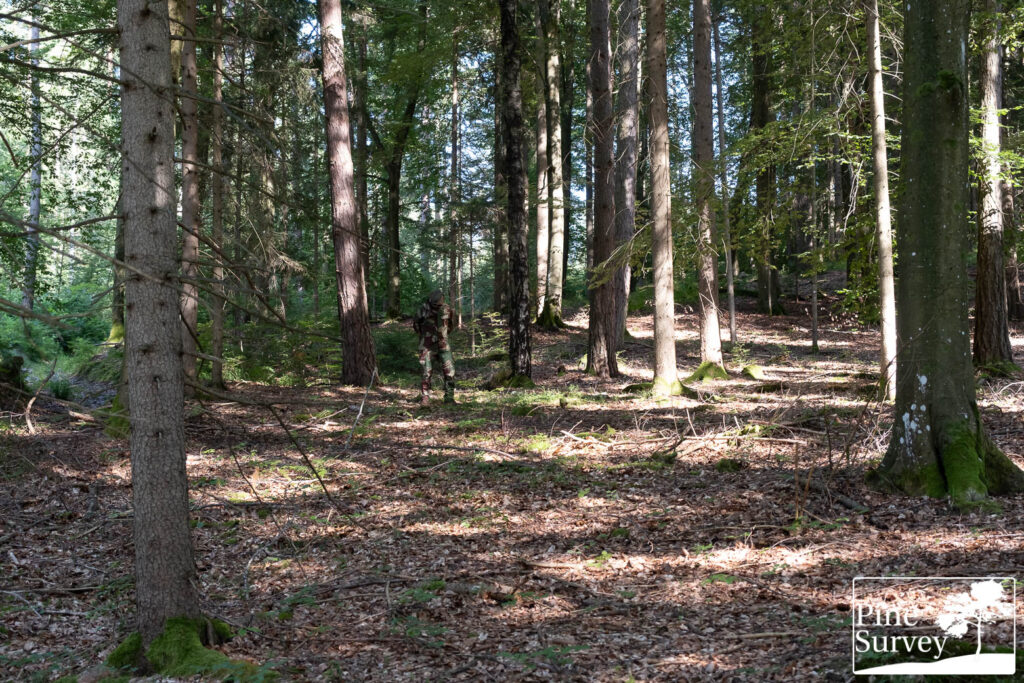
Lastly, a kneeling picture under some scrub with a dry floor. Here you can see the effectiveness in a busy environment with lots of twigs, greens, browns and bright light in the background.
Conclusion
Functionality aside, Rhodesian Brushstroke carries both historical weight and a degree of mythos among camo enthusiasts and collectors. While some view its association with a controversial period of history as a limiting factor, others recognize its effectiveness and distinctive aesthetic as reasons for its continued use.
In terms of effectiveness it is certainly among the best patterns developed during the Cold War. Designed for longer engagement distances and thus focusing not only on blending, but also on disruption, one has to incorporate those considerations when using it. That being said, Rhodesian Brushstroke clearly shows that one does not need to invent something new and that some camouflage patterns are staying relevant not only because of an internet hype, but because of their actual performance.
Coming to an end, I want to thank Perunika for providing a set of Rhodesian Brushstroke for this field test – making it possible.
Thank you for reading!
Take care!


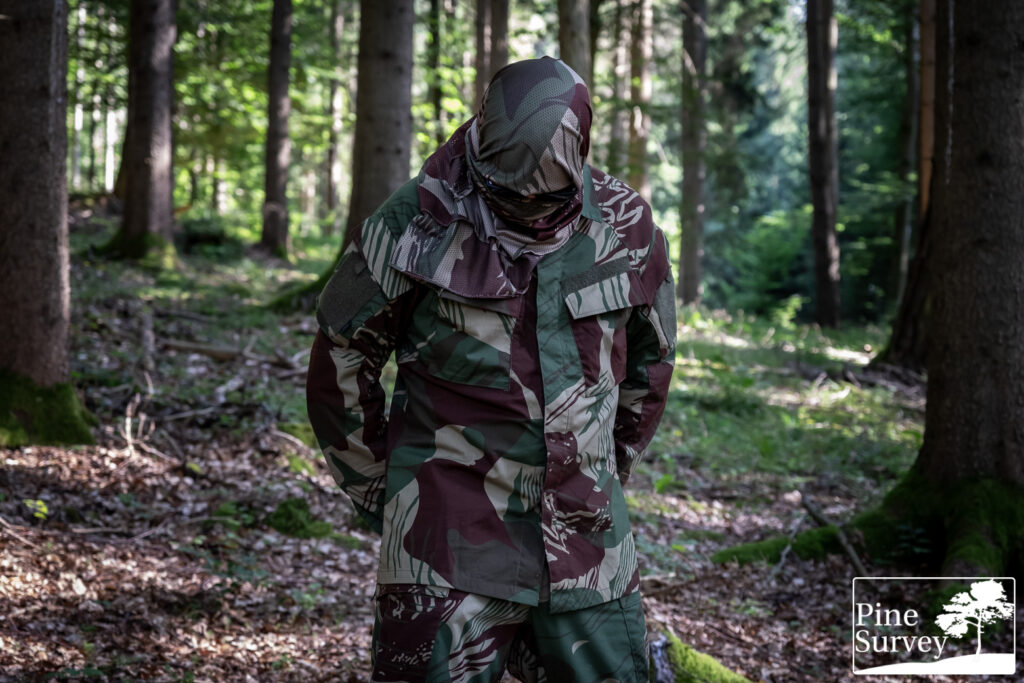
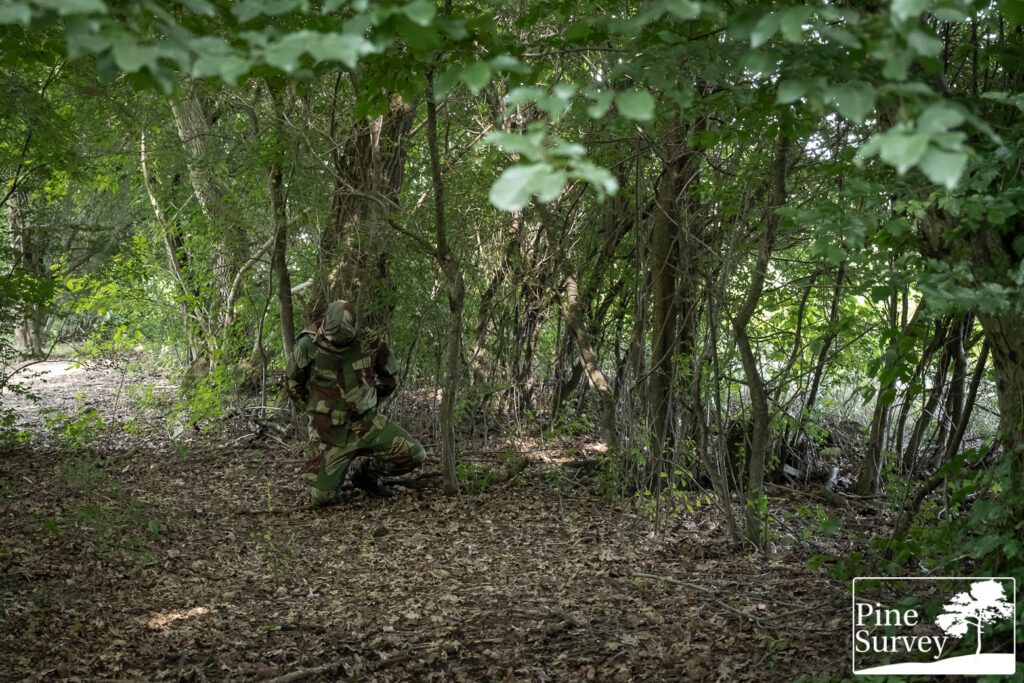
No Comment
You can post first response comment.